 | TODAY IN SCIENCE HISTORY
NEWSLETTER - 15 JANUARY |
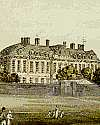 On 15 Jan 1759, the British Museum, in Bloomsbury, London, the world's oldest public national museum, opened to the public who were admitted in small groups, by ticket obtained in advance, for a conducted tour. It was established on 7 Jun 1753 when King George II gave his royal assent to an Act of Parliament on 5 Apr 1753 to acquire the collection of Sir Hans Sloane. In his will, he had offered the nation his lifetime collection of 71,000 objects, mostly plant and animal specimens. In return, he requested £20,000 for his heirs (which today would be over £2,000,000). The present museum buildings date from the mid-19th century. Its natural history collection moved to its own museum in 1881. The British Museum set up a laboratory in 1920 for its scientific studies. The General Guide to the British Museum Natural History (1898) describes the building which now houses the museum, which stands on part of the site of the International Exhibition of 1862 at South Kensington. On 15 Jan 1759, the British Museum, in Bloomsbury, London, the world's oldest public national museum, opened to the public who were admitted in small groups, by ticket obtained in advance, for a conducted tour. It was established on 7 Jun 1753 when King George II gave his royal assent to an Act of Parliament on 5 Apr 1753 to acquire the collection of Sir Hans Sloane. In his will, he had offered the nation his lifetime collection of 71,000 objects, mostly plant and animal specimens. In return, he requested £20,000 for his heirs (which today would be over £2,000,000). The present museum buildings date from the mid-19th century. Its natural history collection moved to its own museum in 1881. The British Museum set up a laboratory in 1920 for its scientific studies. The General Guide to the British Museum Natural History (1898) describes the building which now houses the museum, which stands on part of the site of the International Exhibition of 1862 at South Kensington. |
 On 15 Jan 1900, Richard Bevan Braithwaite was born, a British physicist and mathematician who turned to the philosophy of science. Today's Science Store pick is: Scientific Explanation: A Study of the Function of Theory, Probability and Law in Science, by Richard Bevan Braithwaite. The first chapters deal with models, theoretical terms and deductions, followed by chapters on probability and statistical hypotheses and concludes with an analysis of induction, causality and teleological explanation. His focus throughout is not on how science should work, but on how science does work. It is available New from $42.69. Used from $2.64. (As of time of writing.). On 15 Jan 1900, Richard Bevan Braithwaite was born, a British physicist and mathematician who turned to the philosophy of science. Today's Science Store pick is: Scientific Explanation: A Study of the Function of Theory, Probability and Law in Science, by Richard Bevan Braithwaite. The first chapters deal with models, theoretical terms and deductions, followed by chapters on probability and statistical hypotheses and concludes with an analysis of induction, causality and teleological explanation. His focus throughout is not on how science should work, but on how science does work. It is available New from $42.69. Used from $2.64. (As of time of writing.). | | For picks from earlier newsletters, see the Today in Science History Science Store home page. | |
| It is impossible to be a mathematician without being a poet in soul. - Sofya Kovalevskaya, Russian mathematician and novelist (born 15 Jan 1850).  |
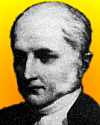 | I had come to the conclusion, that the principal alimentary matters might be reduced to the three great classes, namely the saccharine, the oily and the albuminous. - William Prout, English biochemist and physiologist (born 15 Jan 1785).  |
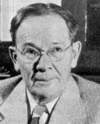 | It is evident, therefore, that one of the most fundamental problems of psychology is that of investigating the laws of mental growth. When these laws are known, the door of the future will in a measure be opened; determination of the child's present status will enable us to forecast what manner of adult he will become. - Lewis M. Terman, American psychologist (born 15 Jan 1877). |
| Before you look at today's web page, see if you can answer some of these questions about the events that happened on this day. Some of the names are very familiar. Others will likely stump you. Tickle your curiosity with these questions, then check your answers on today's web page. |
| A Hungarian-born American nuclear physicist, born 15 Jan 1908, participated in the production of the first atomic bomb (1945) and led the development of the world's first thermonuclear weapon, the hydrogen bomb. He is sometimes known as “the father of the H-bomb.” His unfavourable evidence in the Robert Oppenheimer security-clearance hearing lost him some respect amongst scientists.
 Can you name this scientist? |
 | On 15 Jan 1877, Lewis M. Terman was born, a U.S. psychologist who pioneered individual intelligence tests. During WW I, he was involved in mass testing of intelligence for the U.S. army. He introduced the IQ (Intelligence Quotient).
 What are the numerator and denominator in the Intelligence Quotient definition? |
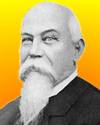 | Alpheus Hyatt (1838-1902) was a U.S. zoologist and paleontologist who studied invertebrate fossil records, the evolution of the cephalopods. Along with E. Cope, he was the most prominent American neo-Lamarckian.
 What are cephalopods? |
| On 15 Jan of a certain year, the first solar-heated and radiation-cooled house in the U.S. started its system. It was built by Raymond W. Bliss in Tucson, Arizona. The system was built at a cost of nearly $4,000 for labour and materials. It was made using a large slanting slab of steel and glass that converted sunlight into heat, which was ducted into the house.
 In what decade was this solar heating system started? |
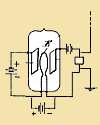 | On 15 Jan 1907, the three-element vacuum tube was issued a U.S. patent to its inventor, Dr Lee de Forest.
 What was the useful function of this tube? |
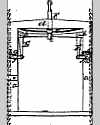 | On 15 Jan 1861, the safety elevator was patented as a “Hoisting Apparatus” by its American inventor. His invention was designed to arrest a fall in case of the lifting rope breaking. It used spring-loaded pawls that would release and engage in a mortised track in the walls of the shaft.
 Can you name this inventor who is well-known as an elevator manufacturer? |
When you have your answers ready to all the questions above, you'll find all the information to check them, and more, on the January 15 web page of Today in Science History. Or, try this link first for just the brief answers.
Fast answers for the previous newsletter for January 14: cottonseed oil • Drunnkometer • crude oil • Charles Lutwidge Dodgson (pen name Lewis Carroll) • Henry Ford • Isle of Wight. |
 If you enjoy this newsletter, the website, or wish to offer encouragement or ideas, please send feedback by using your mail reader Reply button. If you enjoy this newsletter, the website, or wish to offer encouragement or ideas, please send feedback by using your mail reader Reply button.
Your click on a StumbleUpon, Google+ or Facebook social button on the site webpages is also a welcome sign of appreciation. Thank you for using them. |
To find citations for quotations go to the corresponding webpage by clicking on the “quotes” balloon icon. Sources for the thumbnails appear on today's webpage with the corresponding item.
� This newsletter is copyright 2014 by todayinsci.com. Please respect the Webmaster's wishes and do not put copies online of the Newsletter � or any Today in Science History webpage. (If you already have done so, please remove them. Thank you.) Offline use in education is encouraged such as a printout on a bulletin board, or projected for classroom viewing. Online, descriptive links to our pages are welcomed, as these will provide a reader with the most recent revisions, additions and/or corrections of a webpage. For any other copyright questions, please contact the Webmaster by using your mail reader Reply button. |
--
If you do not want to receive any more newsletters,
Unsubscribe To update your preferences and to unsubscribe visit
this link 


 On 15 Jan 1759, the British Museum, in Bloomsbury, London, the world's oldest public national museum, opened to the public who were admitted in small groups, by ticket obtained in advance, for a conducted tour. It was established on 7 Jun 1753 when King George II gave his royal assent to an Act of Parliament on 5 Apr 1753 to acquire the collection of Sir Hans Sloane. In his will, he had offered the nation his lifetime collection of 71,000 objects, mostly plant and animal specimens. In return, he requested £20,000 for his heirs (which today would be over £2,000,000). The present museum buildings date from the mid-19th century. Its natural history collection moved to its own museum in 1881. The British Museum set up a laboratory in 1920 for its scientific studies. The General Guide to the British Museum Natural History (1898) describes the building which now houses the museum, which stands on part of the site of the International Exhibition of 1862 at South Kensington.
On 15 Jan 1759, the British Museum, in Bloomsbury, London, the world's oldest public national museum, opened to the public who were admitted in small groups, by ticket obtained in advance, for a conducted tour. It was established on 7 Jun 1753 when King George II gave his royal assent to an Act of Parliament on 5 Apr 1753 to acquire the collection of Sir Hans Sloane. In his will, he had offered the nation his lifetime collection of 71,000 objects, mostly plant and animal specimens. In return, he requested £20,000 for his heirs (which today would be over £2,000,000). The present museum buildings date from the mid-19th century. Its natural history collection moved to its own museum in 1881. The British Museum set up a laboratory in 1920 for its scientific studies. The General Guide to the British Museum Natural History (1898) describes the building which now houses the museum, which stands on part of the site of the International Exhibition of 1862 at South Kensington. 

 Can you name this scientist?
Can you name this scientist? 
 What are the numerator and denominator in the Intelligence Quotient definition?
What are the numerator and denominator in the Intelligence Quotient definition? 
 What are cephalopods?
What are cephalopods?  In what decade was this solar heating system started?
In what decade was this solar heating system started? 
 What was the useful function of this tube?
What was the useful function of this tube? 
 Can you name this inventor who is well-known as an elevator manufacturer?
Can you name this inventor who is well-known as an elevator manufacturer?  If you enjoy this newsletter, the website, or wish to offer encouragement or ideas, please send feedback by using your mail reader Reply button.
If you enjoy this newsletter, the website, or wish to offer encouragement or ideas, please send feedback by using your mail reader Reply button. 

Δεν υπάρχουν σχόλια:
Δημοσίευση σχολίου